Is a stiffer bike really faster?
We take a closer look at one part of the holy trinity of frame design
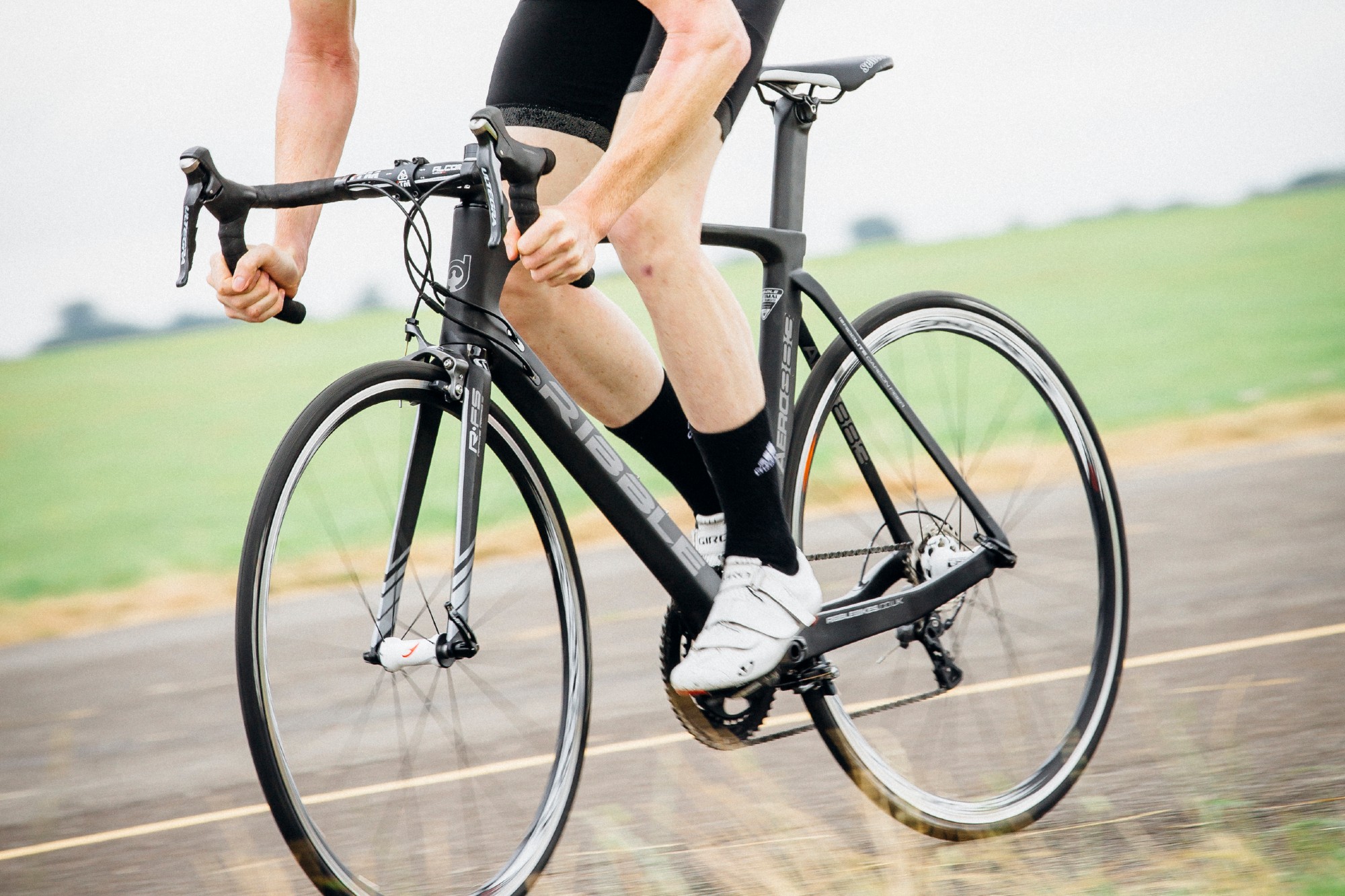

Stiffer, lighter, faster! It seems nearly every newly launched race bike aims for the superlative in all three of the holy trinity. Weight is easily quantifiable, aerodynamics ditto – but stiffness is more difficult.
Instead, we tend to hear ‘it’s 15 per cent stiffer’ than the previous model, or 'it's as stiff as the last model, but the weight has been reduced - so stiffness to weight is improved'. These more woolly claims are largely used because different brands have their own methods of testing stiffness, and a bit like the ‘mine goes to 11’ method of indexing shoe stiffness, the scales aren’t comparable.
The numbers don’t compare
Stiffness tests, in general, are completed by hanging weights from a frame and measuring flexion in millimetres. There are industry standard tests, which frames have to pass. There are standard testing rigs - such as those from Zedler, and it's possible to test all bikes in one rig and compare numbers. If you've got the rig.
>>> More power and longer life… should you be getting your frame faced?
But many brands have their own additional measures.
“We load areas that represent real-world riding experiences, as closely as possible,” explains Doug Russell, engineer at Specialized. “We got there over years of research, strain gauging bikes, to see what areas of the frame are being loaded or stressed, then we developed stiffness tests to replicate that as closely as possible.”
Italian brand Basso does go so fas as to give a finite number, testing the headtube and bottom bracket by inserting a lever to 30cm, and hanging a 50kg weight from it. The mm movement given is painted on to frames such as the Diamante.
The reason many brands don’t give a finite number is that they can mean very little to the consumer. Specialized’s road category lead, Stewart Thompson chimes in, adding “it’s difficult to say ‘it’s 4mm’ or ‘it’s 120 newton metres/mm’ – partly that doesn’t mean a lot to a lot of people, but also there isn’t one number that can measure stiffness, nor are most companies measuring it in identical ways.”
Stiffer isn’t always faster
There were days when frames weren’t stiff enough. As Russell confirms “In the early days of Tarmac we had riders like Tom Boonen who really highlighted the fact that we were lacking and inadequate in certain stiffness areas.”
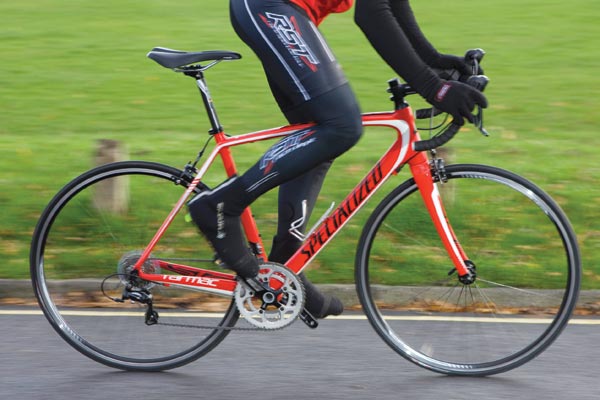
Those days are behind us now, and most brands can make a bike that won’t handle like a noodle. Specialized says its focus is on responsiveness now, which often comes down to stiffness to weight. Yet for some, the pursuit of stiffness continues.
Lecturer at The Bicycle Academy and bike builder Tom Sturdy explains: “Theoretically a stiffer frame will be more efficient as there are fewer losses in the system. In practice, I believe the answer is more complex.”
Whilst a stiff frame might, in theory, mean all the rider’s power is translated to forward momentum, in reality, it may cause them to fatigue more quickly. On uneven roads a lack of flex could be a detriment, in the same way hard tyres can be inefficient as they skit over the surface.
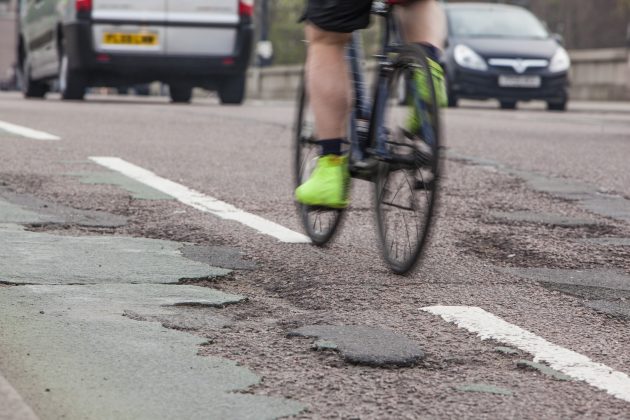
Both Sturdy and the representatives from Specialized confirmed that in blind tests, riders have failed to pick out a stiffer frame when directly asked. Instead, many find they're faster on a bike with more give - sometimes even attributing this to 'more stiffness'. Because 'stiffness' and ride quality are subjective.
“I have built frames that I know to be flexible relative to people's existing frame of reference yet will often get feedback that they feel stiff and riders are setting PBs,” Sturdy, builder at Sturdy Cycles, says.
“I think that what it ultimately comes down to is that in an absolute sense a stiffer frame will certainly convert more of a rider’s effort into useful movement. In reality though we have to consider the relationship between rider and machine and that is a bit more complex, it may well be that a rider is able to generate a more efficient effort on a frame that is a bit more forgiving resulting in a net gain in performance.”
Handling vs compliance
One area of confusion is the temptation to allow crossovers in logic between handling stiffness, and rigidity versus compliance. They’re different.
Handling stiffness is very much about how much the bike twists when we change our plane of movement. It’s critically measured at the head tube and bottom bracket.
“The tubes located on the lower “hemisphere” of the bike are the ones most directly related to the stiffness, reactivity and consequentially power transfer of the bike,” says Basso’s Josh Riddle.
“The head tube, bottom bracket, down tube and chainstays… out of these the areas with most torsion applied from the rider are the BB and head tube. Strengthening them makes for a snappier, more reactive, better handling frame.”
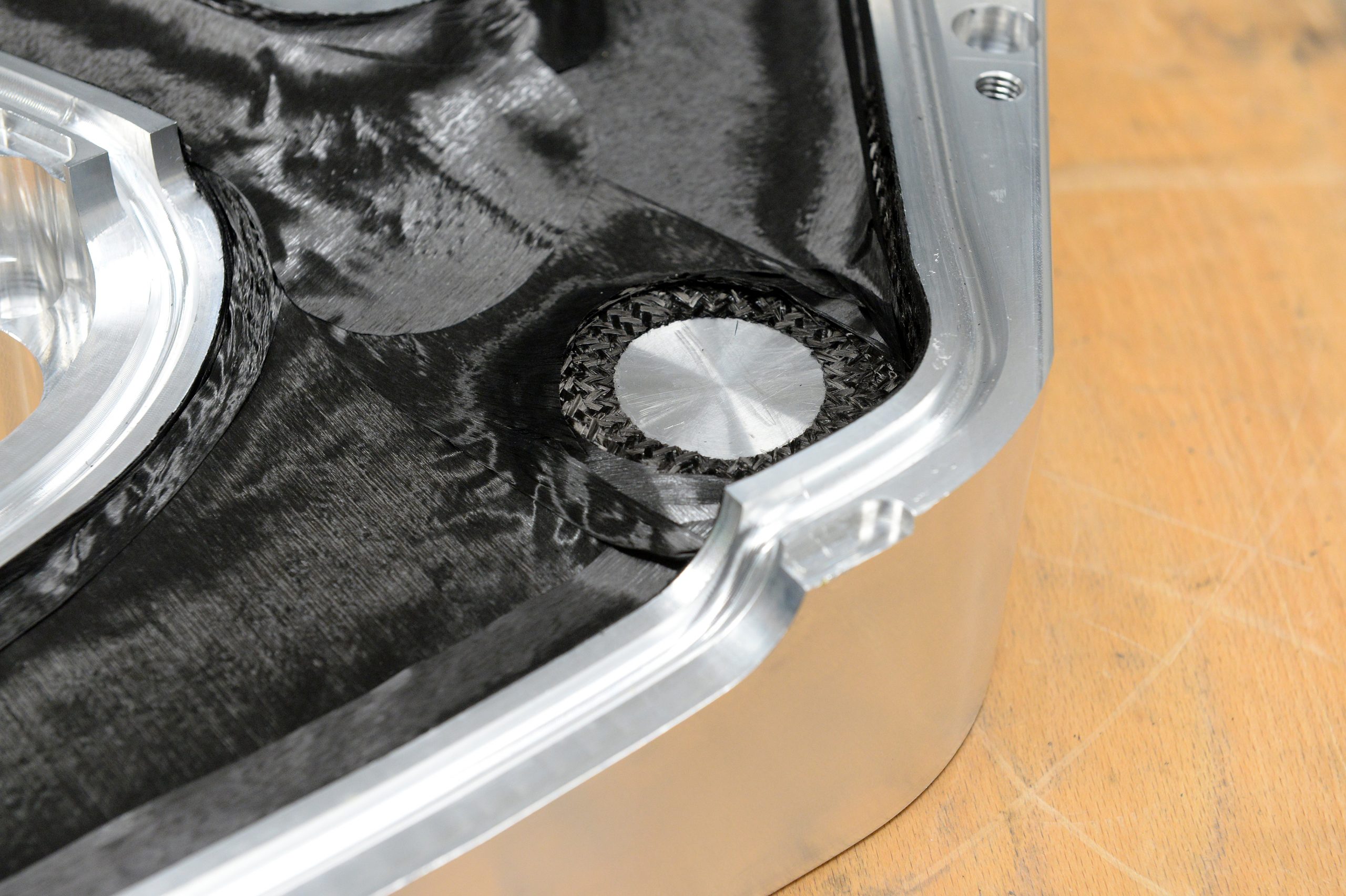
The targets for this stiffness – and resultant good handling - don’t change much between a road race and an endurance bikes, according to Specialized. What does change is the level of compliance afforded. However, whilst carbon layup does play a part, much of this comes down to other areas: geometry, the tyres specced, even adding suspension.
“Compliance targets in endurance bikes are different – for example, we’d put the FutureShock on. But the stiffness targets are relatively similar, if not identical. Those numbers equate a certain handling response.”
“If I go and ride the Diverge [adventure road bike], its very smooth and compliant, but it doesn’t mean it has low stiffness," Russell says.
How much the brand’s marketing material talks about stiffness also changes – largely to suit the priorities of the rider’s internal shopping list.
"[In marketing material] we speak accurately about the attributes of the bike, but we always just highlight things that are more relevant to a certain rider. There are more factors relevant to a gravel rider, but frame stiffness is a little lower on their list,” Steward adds.
Adjusting stiffness to rider weight
It’s very easy to make a small frame very stiff, and it’s very easy to make a large frame very flexible. The difficulty here is that typically smaller riders put out less power, so need less stiffness, and taller riders put out more power. Bike designers are effectively fighting physics at both ends of the scale.
Specialized says it does this by embedding more material into the smaller frames.
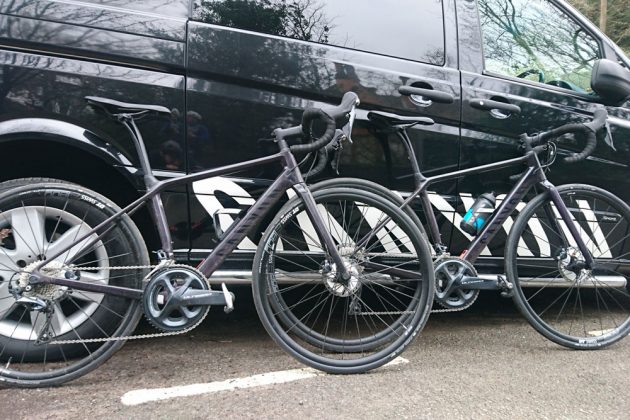
“We’ve never made a small frame that was not stiff enough, you’re always bordering on more stiff than we would like. A Tarmac SL6, in a small size frame, is not any lighter than a 56 because we purposefully put extra material in there that’s not as stiff, so you’d get more flex in there than you would a 56. That means our small bikes don’t chatter as much as a small bike from competitors,” Russell notes.
As he points out, this approach isn’t uniform. Sturdy says very few brands use a size-specific approach.
“Generally speaking [size specific tubing is] not something that is done as much as you might assume: most frames will be designed around a 'load case' that is set out in an internationally agreed standard. This test does not prescribe different loads for different sizes of bikes and so as a result when you benchmark it against this test most models will have fairly similar performance irrespective of size.
“Again, when producing a bike specifically for one individual I have the opportunity to optimise things a bit more but unless size-specific load cases are introduced into the agreed testing standards I doubt that the current situation would change much for mass-produced bikes.”
What about you?
As a consumer, if you want to buy a bike you’ll no doubt be bombarded with claims: this bike is 20 per cent stiffer than its predecessor and 20 per cent stiffer than the one before that – which frankly means nothing if you never rode the first one. So what do you focus on?
Well, it's unlikely the correct answer is 'buy the stiffest bike you can'. Closer to the truth would be: do your research, and test ride whenever you can.
“A lot of bikes are pretty good these days” Thompson admits. “Test ride a bike before you buy it, listen to bike shop advice, advice from reviewers. If I was a really tall guy, I might take advice from a tall friend of mine, or a tall reviewer, much more than I would from a smaller rider – and vice versa.”

Think about the kind of riding you're going to be doing and the sort of rider you are. Are you sprinting all-out, all the time?
"If you're opening up a sprint you might appreciate the all or nothing bike, if you're trying to hold an average speed over the course of a hundred miler maybe the more flexible one is best," Sturdy says.
If you're a smaller, lighter rider, bear in mind that not all frames will be adequately tuned - you might genuinely be experiencing a bumpier ride than your taller buddies on the same model.
Finally, whilst the frame is at the absolute heart of a bike, there's so much more to 'ride quality'. Asked if consumers are better off ignoring stiffness claims altogether, and focusing on geometry and componentry, Sturdy says "yes".

Thank you for reading 20 articles this month* Join now for unlimited access
Enjoy your first month for just £1 / $1 / €1
*Read 5 free articles per month without a subscription

Join now for unlimited access
Try first month for just £1 / $1 / €1
Get The Leadout Newsletter
The latest race content, interviews, features, reviews and expert buying guides, direct to your inbox!
Michelle Arthurs-Brennan the Editor of Cycling Weekly website. An NCTJ qualified traditional journalist by trade, Michelle began her career working for local newspapers. She's worked within the cycling industry since 2012, and joined the Cycling Weekly team in 2017, having previously been Editor at Total Women's Cycling. Prior to welcoming her first daughter in 2022, Michelle raced on the road, track, and in time trials, and still rides as much as she can - albeit a fair proportion indoors, for now.
Michelle is on maternity leave from April 2025 until spring 2026.
-
 'One of the hardest races I've ever done in my life' - Tadej Pogačar finishes runner-up on Paris-Roubaix debut after crash
'One of the hardest races I've ever done in my life' - Tadej Pogačar finishes runner-up on Paris-Roubaix debut after crashWorld champion reacts to 'extremely hard' battle with Mathieu van der Poel
By Tom Davidson Published
-
 'I thought it would be dark by the time I got here' - Joey Pidcock, the last rider to finish Paris-Roubaix, on his brutal day out
'I thought it would be dark by the time I got here' - Joey Pidcock, the last rider to finish Paris-Roubaix, on his brutal day outQ36.5 rider finishes outside time limit, but still completes race with lap of the Roubaix Velodrome
By Adam Becket Published
-
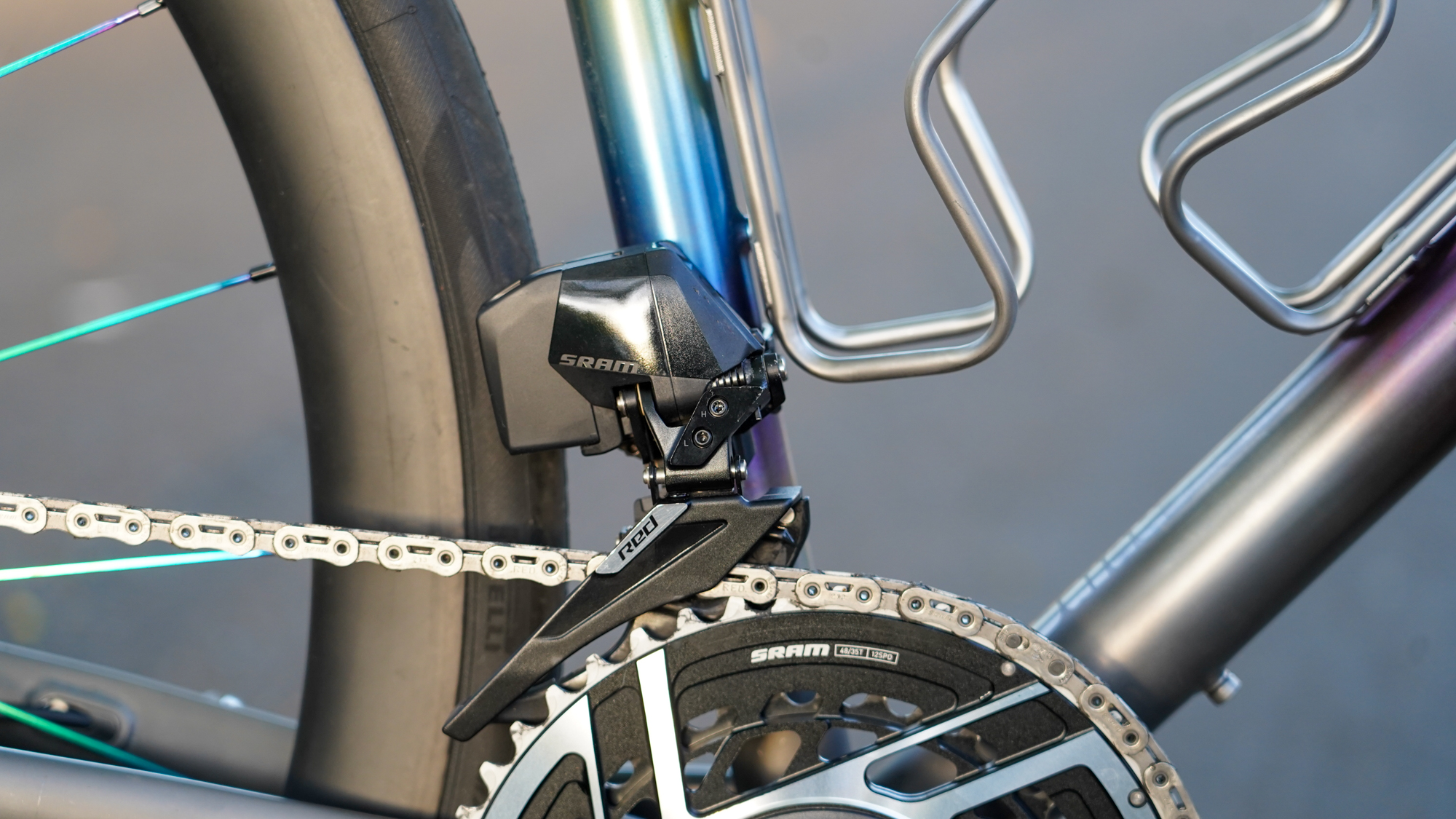 Opinion: Are electronic groupsets worth the investment?
Opinion: Are electronic groupsets worth the investment?Thoughts on drivetrains, buttons, batteries, fast vs slow, good vs evil, wristwatches and zen states of being
By Tyler Boucher Published
-
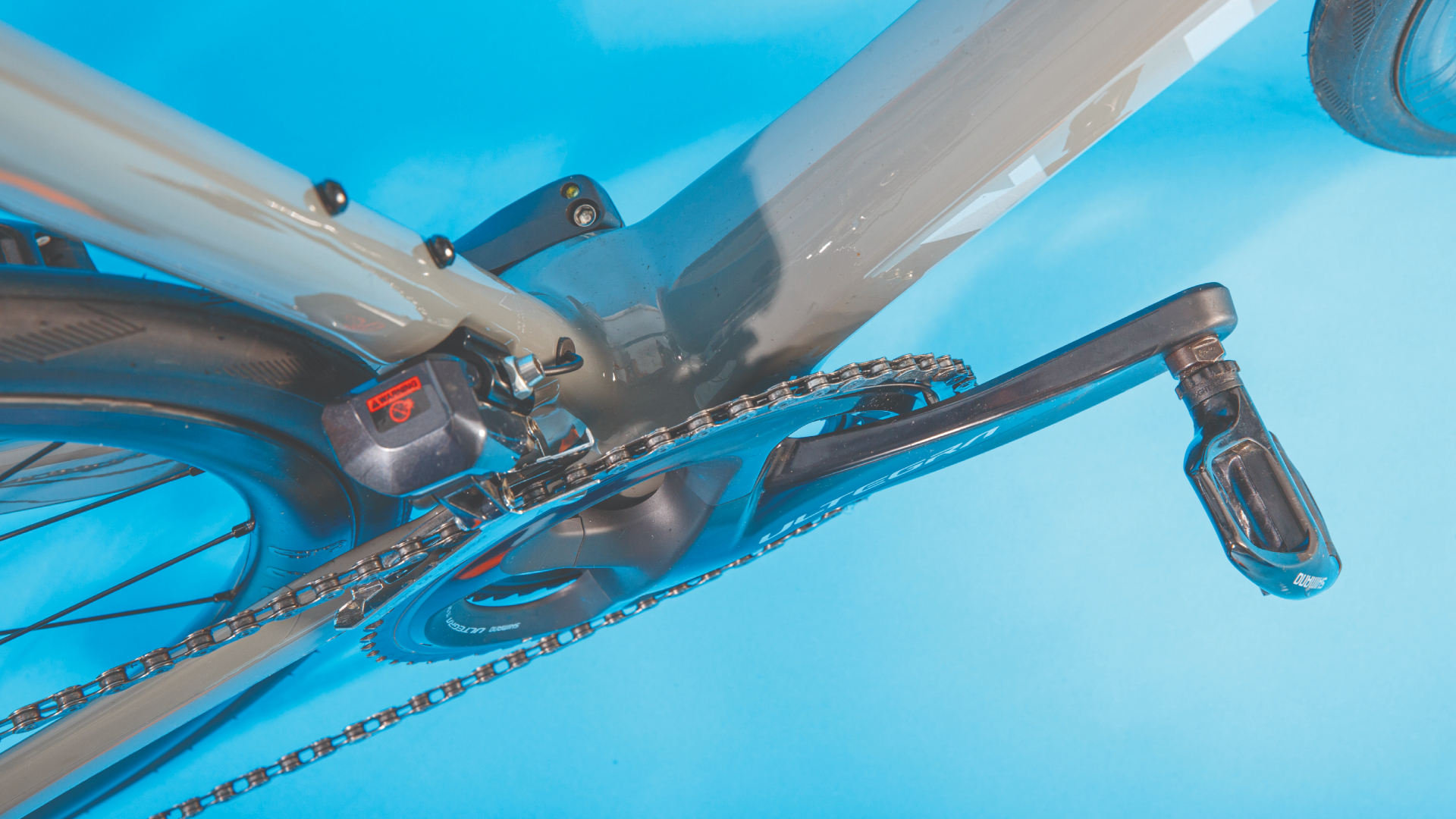 Everything you want to know about the Q Factor
Everything you want to know about the Q FactorWhat it is and why it matters, how to measure it, what the Q stands for, and more
By Tyler Boucher Published
-
 Stiffness vs. Compliance: Making sense of bicycle frame design
Stiffness vs. Compliance: Making sense of bicycle frame designHow frame designers find the sweet spot between stiffness and compliance as well as some thoughts on “ride quality”
By Tyler Boucher Published
-
 Tech Question: We're used to racers on narrow bars - but are they more comfortable, too?
Tech Question: We're used to racers on narrow bars - but are they more comfortable, too?We ask the experts what to look for in determining the optimal handlebar width
By Joe Baker Published
-
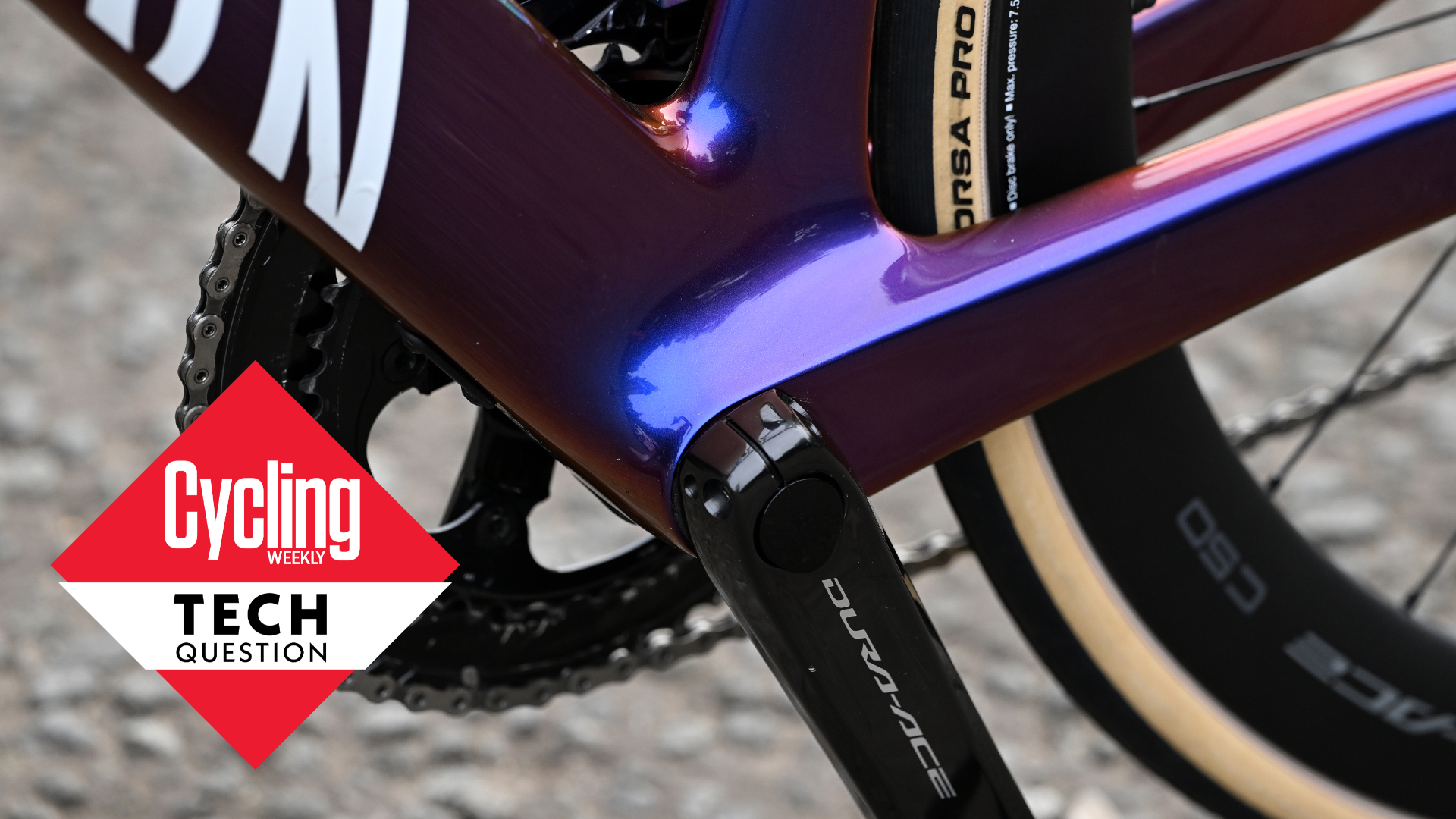 Tech Question: Where do things now stand on press-fit bottom brackets? Good or bad?
Tech Question: Where do things now stand on press-fit bottom brackets? Good or bad?Few innovations have garnered as much animosity as press-fit bottom brackets - but the tech now has some strong proponents
By Stefan Abram Published
-
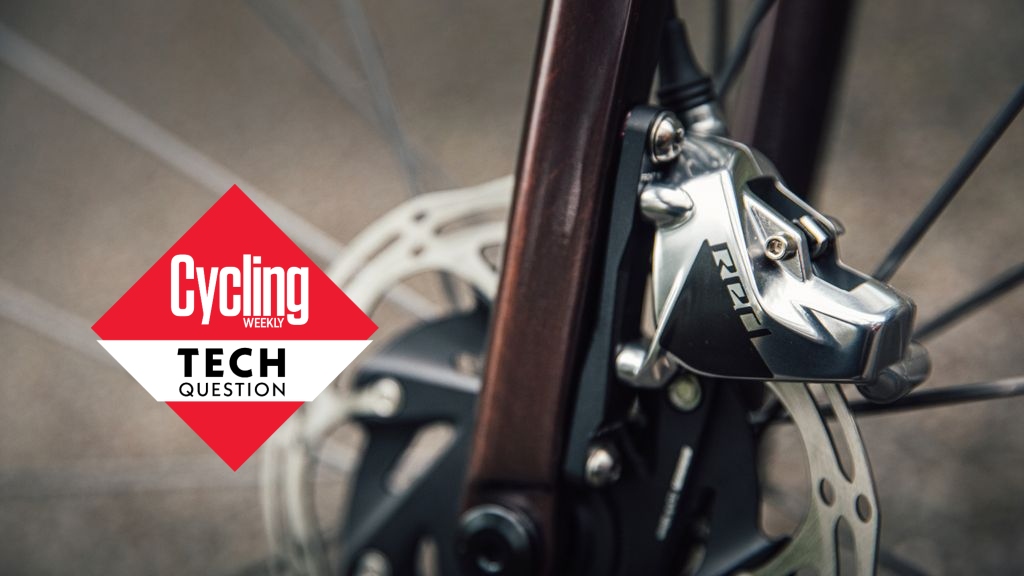 Tech Question: Is a proper clean the only disc brake upgrade you need?
Tech Question: Is a proper clean the only disc brake upgrade you need?Bike mechanic and owner of Surrey Hills Cycleworks, Dave Farmer, shares his tips on how to improve braking performance
By Stefan Abram Published
-
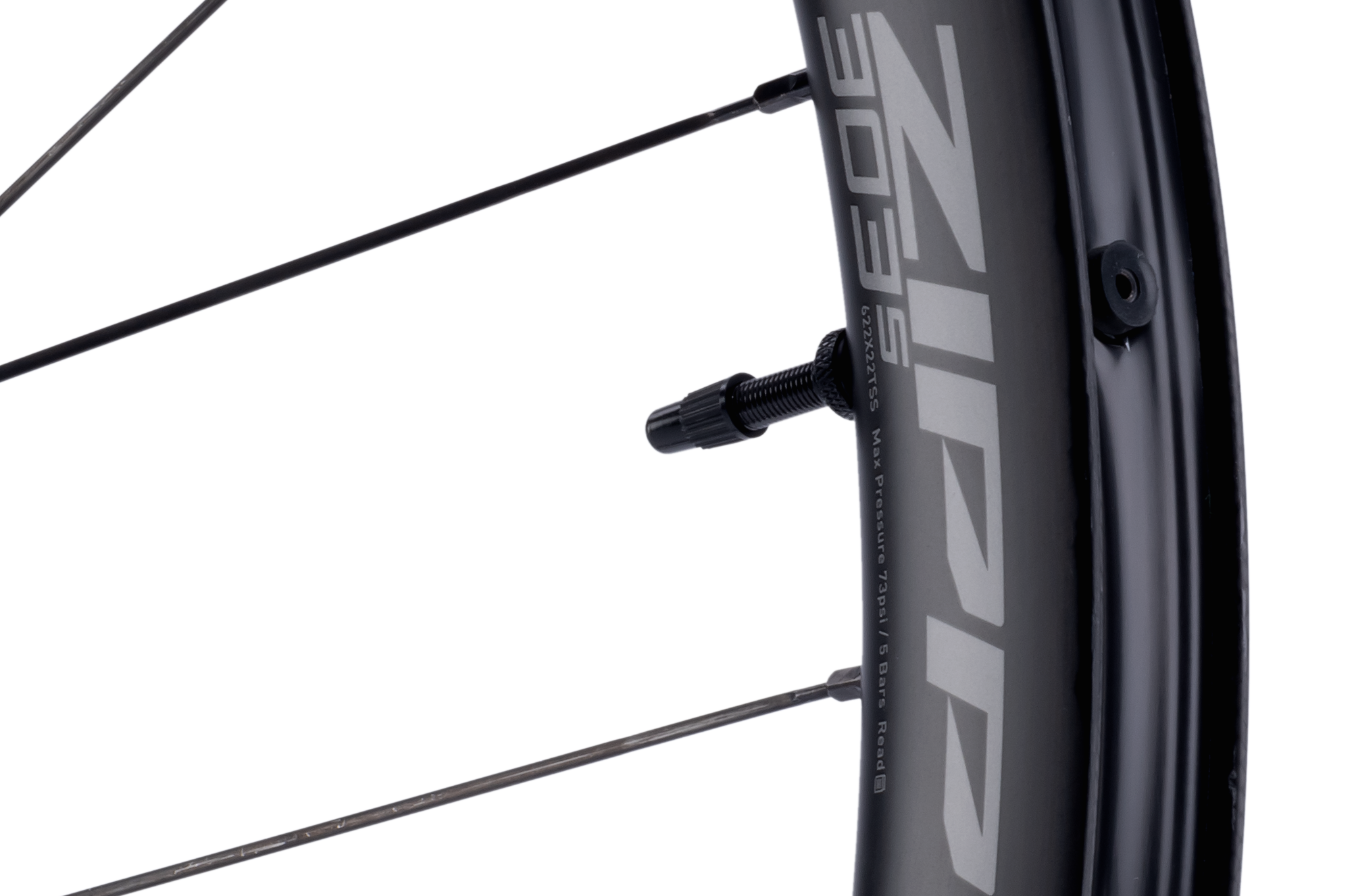 What are hookless rims and do you need them?
What are hookless rims and do you need them?With the big wheel brands launching new rims with straight sidewalls, we ask whether hookless technology can benefit your bike riding
By Simon Smythe Published
-
 Do you need indoor cycling specific clothing?
Do you need indoor cycling specific clothing?With an ever expanding range of indoor cycling kit available, we ask if it really makes any difference?
By Michelle Arthurs-Brennan Published